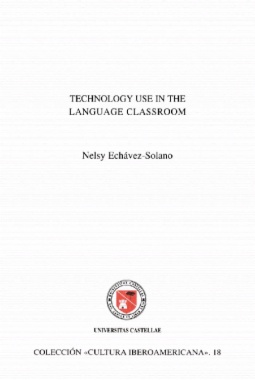¿Realmente el ordenador ayuda a los estudiantes a aprender otro idioma? ¿Puede ayudarles a aprender a comunicarse en otro lenguaje? El problema es que, en general, esta cuestión no se puede investigar con suficiente validez sin la identificación e investigación de sus componentes individuales.
- Cover
- TABLE OF CONTENTS
- CHAPTER 1. INTRODUCTION
- Background of the Problem
- Purpose of the Study
- CHAPTER 2. REVIEW OF THE LITERATURE
- The Use of Technology in Foreign Language Learning and Instruction
- Early Attempts to Utilize Technology for Language Learning
- The Advantages of Technology-Enhanced Language Learning
- The Challenges of Technology-Enhanced Language Learning
- Connecting CALL with Individual Learners
- Adapting CALL to Learners' Needs
- Theoretical Aspects Involving CALL
- The Effects of Reduced Class Time on Student Performance
- Individual Differences
- Motivation
- Language Learning Motivation
- Motivational Factors in Computer-Mediated Communication
- Task Motivation in CALL
- Anxiety
- Anxiety and Comfort in CALL
- Risk-Taking in CALL
- Sociability in CALL
- Teaching Styles Associated with CALL
- Gender and Achievement in Foreign Language Courses
- Gender and Achievement in CALL
- The Pilot Study
- Research Questions Investigated in the Present Study
- CHAPTER 3. RESEARCH DESIGN
- Institutional Context
- Subjects
- The Students
- The Instructors
- Course Content
- Structured Input and Mallard
- Technology-Enhanced Language Learning at the University of Illinois at Urbana-Champaign
- Technology-Enhanced Language Learning at the University of Minnesota
- The University of Minnesota Mallard System
- ¿Sabías que . . . ? Text Input Activities
- ¿Sabías que . . . ? Workbook (Manual) Activities
- Destinos
- Discussion Groups
- Instrumentation
- Questionnaires
- Student Pre-Questionnaires
- Student Post-Questionnaires
- Instructor Pre-Questionnaire
- Instructor Post-Questionnaire
- The SOPI
- The CLA Entrance Listening Exam
- Other Evaluation Tools
- Focus Groups
- Student Grades
- Student Oral Interviews
- Analysis
- CHAPTER 4. RESULTS
- Research Question #1
- Research Question #2
- CHAPTER 5. DISCUSSION AND CONCLUSION
- Introduction
- Motivation
- Anxiety and Comfort with Computers
- Risk-Taking
- Sociability
- Evaluation of Affective Variables
- Limitations of the Study
- Future Areas for Research
- Conclusion
- REFERENCES
- Appendix A: Student Pre-Questionnaires
- Appendix B: Student Post-Questionnaires
- Appendix C: Instructor Pre-Questionnaire
- Appendix D: Instructor Post-Questionnaire
- Appendix E-F: Focus Groups

